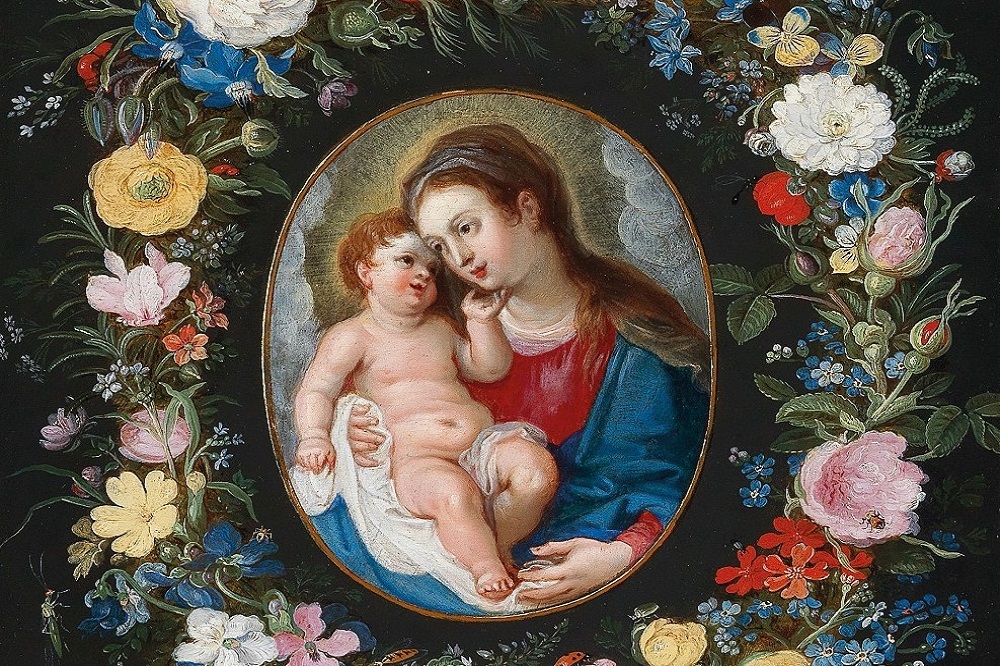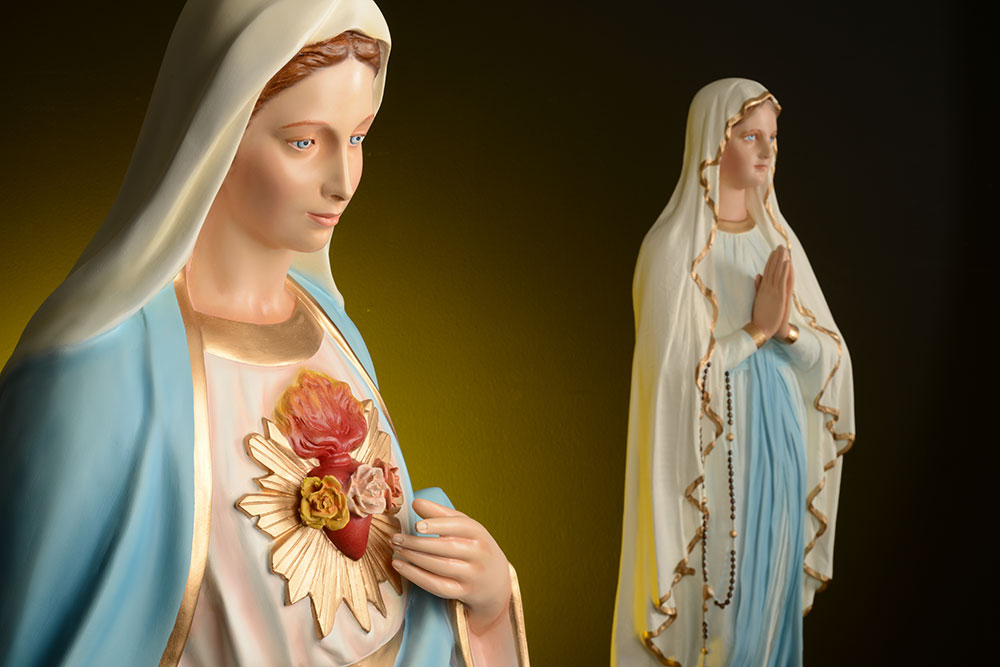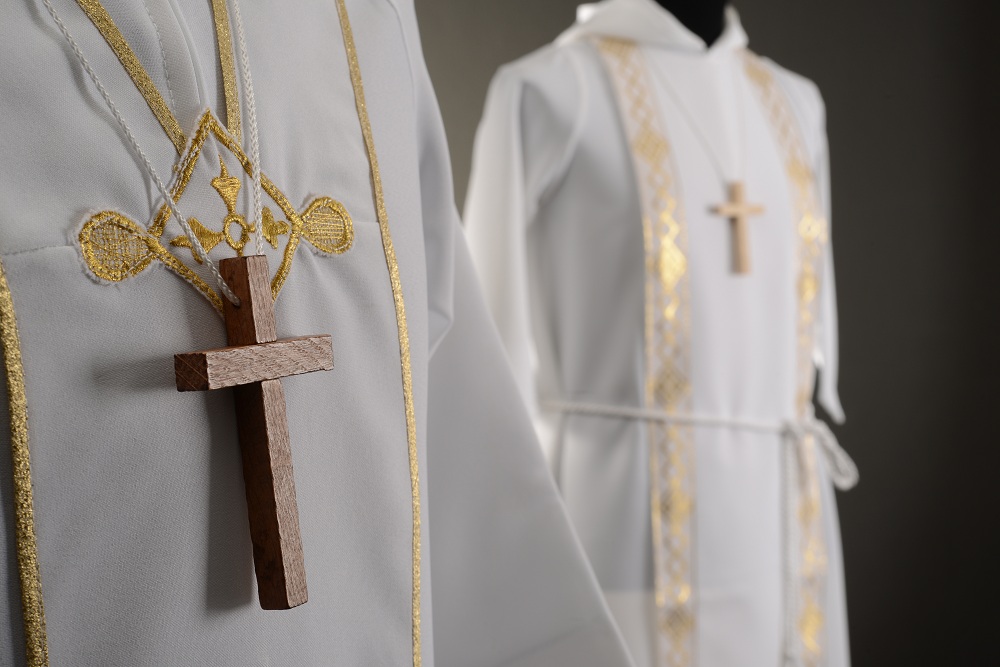A sacrifice to Our Lady, a small sign of devotion to show great love. But how to make one enjoyable?
Contents
Let us start from the assumption that, like all acts of love, even the sacrifice to Our Lady, or to Jesus, will surely be appreciated by those who will receive them. Kind of like when we were kids, we used to give Mom a flower, or a job prepared at school, right on the occasion of her party. Maybe it wasn’t much, but it took so much love to prepare it, so much commitment, and it was that love and commitment that made it valuable.
This is when we make a sacrifice to Our Lady, especially during certain times of the liturgical year, when meditation and prayer should occupy a little of our time every day. We think of Advent, Lent, or certain months in particular, such as May, the month dedicated to the Virgin Mary, June, dedicated to the Sacred Heart of Jesus, and October, the month dedicated to the Holy Rosary.

May is the month of Our Lady: how to celebrate the Marian month
May is the month consecrated to the Virgin Mary. Special prayers, devotions and Mother’s Day…
A sign of love is a sacrifice, a renunciation of something we hold dearly, but bestowed with the same lightness with which a flower is given. Like something that doesn’t matter, something that we can support with courage and grace.
What’s a religious sacrifice?
As we said, it is a sacrifice. A waiver. But what matters is the spirit in which we choose to do without something we like, or care about. If from the beginning our thought is only to make an exchange with Our Lady or Jesus, we are not on the right track. The Sacrifice is not a quid pro quo, a doing something expecting something else in return. It’s not a bargaining chip.
The only thing that must move us in making a Sacrifice is Love.
It is we who choose what to give up, searching our hearts for something we truly care about. It will not be an infinite renunciation, usually, the Sacrifices have a duration, but this is also up to us to establish it. No imposition, no obligation. Only, once we have decided, we must be firm, constant, otherwise, our Sacrifice loses value.
A spontaneous gesture, not moved by a purpose, otherwise, it would be blackmail, not a gesture of love! The vehicle with which we must address it is prayer, and of prayer, the Sacrifice must have solemnity, full awareness of what we are saying. As prayer is not only made up of words lined up one after the other but what matters is the feeling that we instil in it, the attitude of our spirit.
What do we have to give up? From our favourite dessert to Facebook, from a date with friends to an object we care about very much. No need to overdo it. Also, do small services in the house, take out the garbage, clear the table, dedicate time to someone we usually take for granted, such as an old man, a neighbour a bit boring, but so lonely. Or take a little more time to pray, every day, to speak directly with Jesus, or with Our Lady. These are the appreciated Sacrifices, the ones that put altogether create a precious flowerbed, a kind of garden of Eden in miniature. The more the sacrifice costs, the more it will be pleasing in the eyes of God.

The Garden of Eden in Genesis
The Garden of Eden represents the first, immense gift that God gave to man and woman…
How to make a sacrifice to the Madonna
In May, our most beautiful thoughts and prayers turn in particular to Our Lady, the Mother of Jesus. The one who transmitted everything to Him, who cared for Him and raised Him as the most loving of mothers. It is no coincidence that in May we also celebrate Mother’s Day. As the Child Jesus entrusted himself completely to his mother, Mary, so we can do, in this month more than ever. To entrust oneself to Mary means to accept in one’s heart and one’s life her goodness, her mercy, and above all her faith in the will of God. By becoming children of Mary we thus become brothers and sisters of Jesus, we draw closer to Him, we become a little more similar.
The mother is therefore a fundamental presence in the life of a child. Don Bosco, a famous Italian priest and pedagogue, founder of the congregations of the Salesians and the Daughters of Mary Help of Christians, reiterated throughout his life how important his mother, Margaret, had been for his vocation. But also Mary, the heavenly mother of the good saint, but also each one of us, was fundamental. Since he was a child, he greeted Our Lady three times a day, in the morning, at noon and in the evening, with the prayer of the Angelus. This is because Don Bosco felt Our Lady as a mother at every moment, while praying, while working, in all the good times and all the bad, in the joys as in the sorrows. A family dimension of love, not unlike that felt for the natural mother, and precisely to this type of love, he will also invite his boys, towards Mary.
The practice of Sacrifices to the Madonna was also very dear to Don Bosco. His memoirs are full of references to sacrifices.
“In May in the chapel of the Oratory every day some practice of piety was done in his honour, and especially on Saturdays with a reading of his glories, or a sermon. But as of this year (1852) that the habit of offering her, in the month of the physical flowers, spiritual sacrifices began regularly every night in the dormitories. Every evening Don Bosco announced the sacrifice and the short prayer for the following day.”(from Bibliographic Memories IV, p.405)

The Flower to the Madonna is a sacrifice to be offered, this is what the good Saint asked of his boys. And it is interesting to see how sometimes the Sacrifices he requested were special prayers, or listening to the Mass with particular devotion, or even praying for the souls of Purgatory, other times things were much more related to everyday life. Here is an example:
“For everyone, this is the sacrifice; to always speak Italian and to warn us to do so if someone does not remember.”
Children’s sacrifice
But how do we explain Sacrifices to children? Often, especially because of Christmas or Easter, even the little ones are asked to make a sacrifice to Our Lady, for the good of their mother, father and the whole family. Understanding what it is all about is essential. Explain to them that making a Sacrifice is like giving away a flower is perhaps the simplest way, and also the truest way.
If you give Mom a flower, Mom’s happy because she knows you love her. Likewise, if you offer a sacrifice to Our Lady or Jesus, they will also know that you love them and care so much for them. But the sacrifices that are given in Heaven are not like those that bloom in the meadows. They have no petals, no leaves, but they are made of good deeds.
So if you help set up and clear the table, you’re giving Our Lady a sacrifice.
If you don’t fancy watching television, give Jesus a sacrifice. When you tidy up your room or help do something at home, new flowers grow in the Garden of Paradise, and you make them bloom.
It is also important to associate these good deeds and small renunciations with a prayer because in this way the child will understand that this is the correct way to be heard by Jesus.
Above all, make the Sacrifice a joyful act, which makes happy those who do it before those who receive it. So it should be, and children perhaps, by their very nature, are inclined to understand it better than many adults.
San Francis’ sacrifices
Saint Francis of Assisi was also a great supporter of the practice of sacrifices, although, in his case, the term embraces a much wider range of gestures, words and acts. By the Sacrifices of San Francis, we mean a collection of miracles and devout examples taken from the life of the Saint of Assisi and his disciples. It is probably a translation of the Latin Actus beati Francisci et sociorum eius attributed to Friar Ugolino of Monte Santa Maria.

We cannot speak of Sacrifices in the sense we have considered so far, more than anything else the text tells the story of the birth of the Franciscan Order and the life of Francis and his confreres. But the general tone of the work, almost fairy-tale, seems to have been made specially to emphasize what were the virtues of the Saint of Assisi, his modesty, humility, sense of justice and charity, fraternal love for all men, but also animals and all creation. In this sense, we can almost read every single gesture, every act of the life of Saint Francis as a Flower, an act of pure, sincere and disinterested love addressed to God.





















